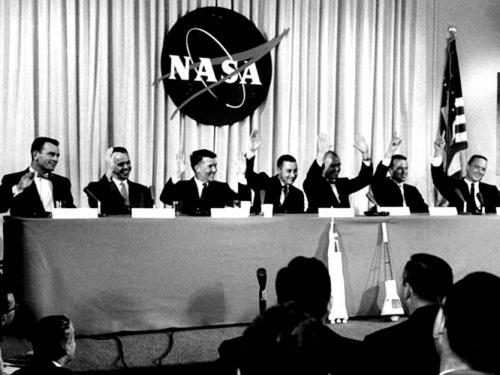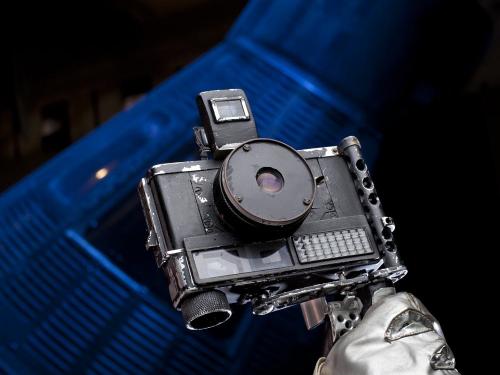14 Images
With this camera, an Ansco Autoset model, astronaut John H. Glenn, Jr., took the first human-captured, color still photographs of the Earth during his three-orbit mission on February 20, 1962. Glenn's pictures paved the way for future Earth photography experiments on American human spaceflight missions.
For ease of use by Glenn, NASA technicians attached a pistol grip handle and trigger to this commercial 35-mm camera, which is upside down from its normal orientation. Because Glenn was wearing a spacesuit helmet and could not get his eye close to a built-in viewfinder, NASA engineers attached a larger viewfinder on top. Glenn found the camera easy to use, in part because he could exploit zero-gravity's advantages. "When I needed both hands, I just let go of the camera and it floated there in front of me," he said in his later memoir.
NASA transferred this camera to the Smithsonian in 1963.
Display Status
This object is not on display at the National Air and Space Museum. It is either on loan or in storage.
Object Details
Country of Origin
Japan
Type
EQUIPMENT-Photographic
Manufactured for
Ansco
Manufacturer
Minolta
Dimensions
3-D (Overall): 13.5 × 7.5 × 24.5cm (5 5/16 × 2 15/16 × 9 5/8 in.)
Materials
Metal, glass, quartz, plastic, velcro
Inventory Number
A19670198000
Credit Line
Transferred from National Aeronautics and Space Administration
Data Source
National Air and Space Museum
Restrictions & Rights
Open Access (CCO)
For more information, visit the Smithsonians Terms of Use.




